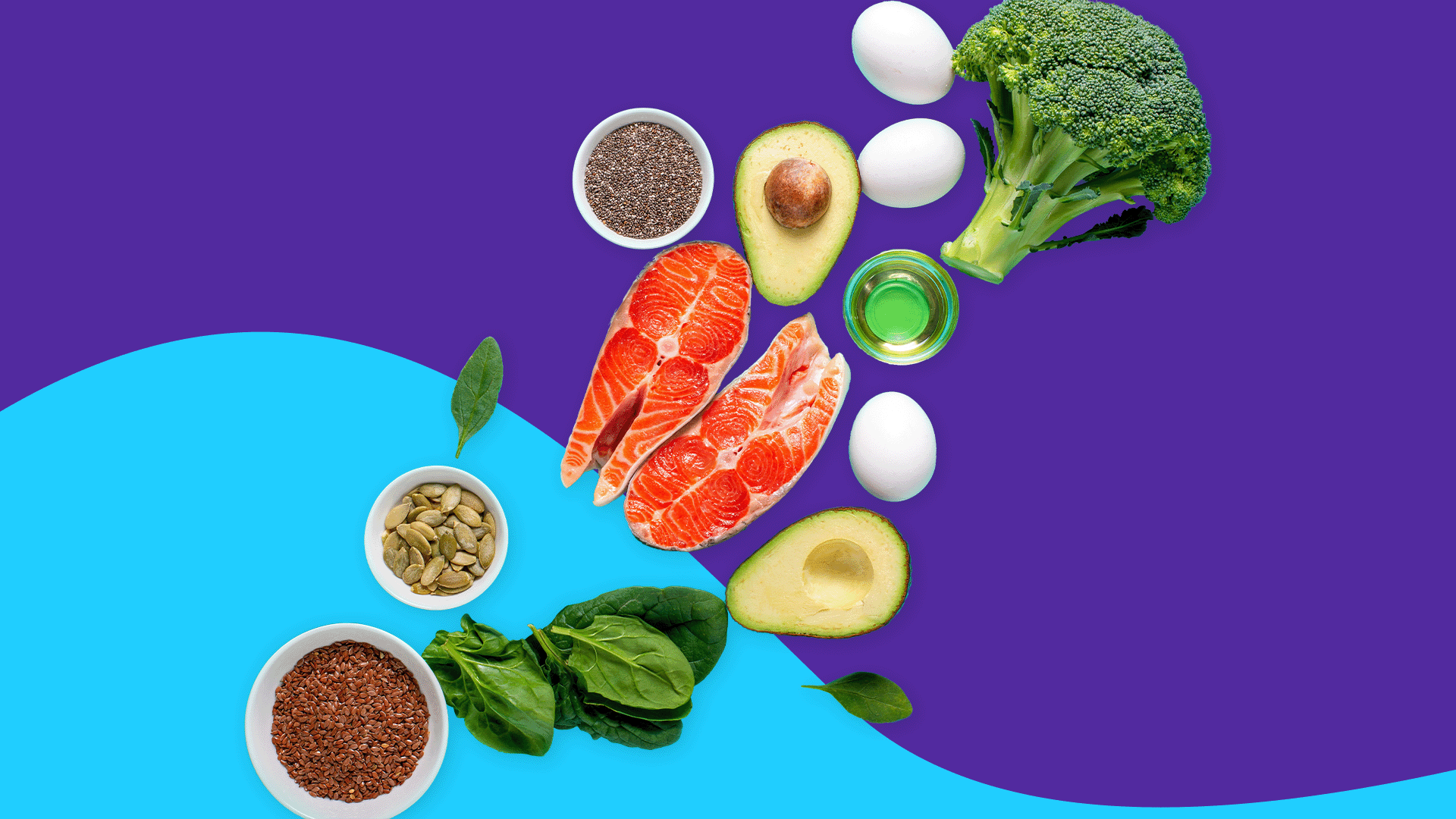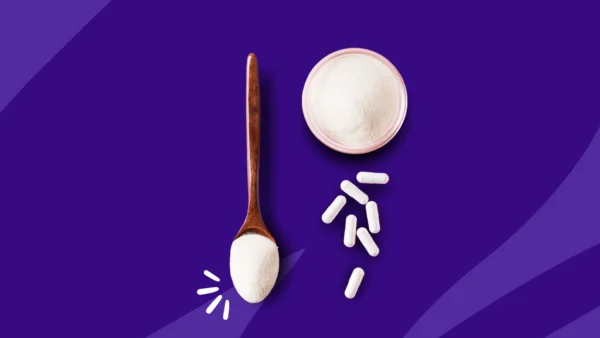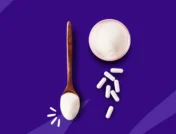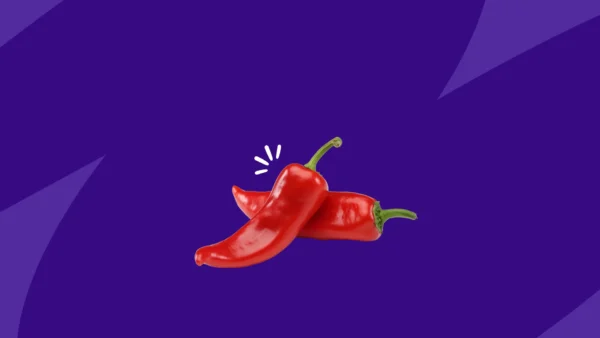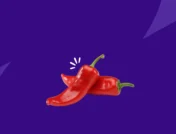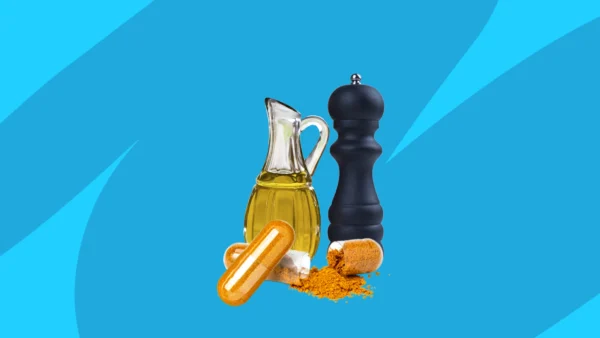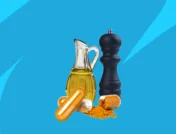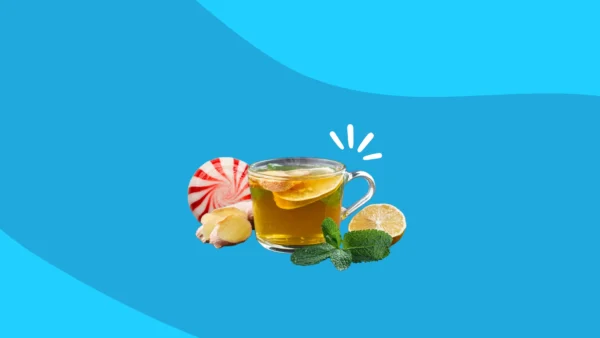If you’ve been diagnosed with high blood pressure, chances are that you were advised to follow the DASH eating plan. The DASH diet emphasizes eating lots of fruits, veggies, and whole grains while limiting salt, saturated fats, and sweets. The DASH diet is a highly effective meal plan with multiple health benefits for people with hypertension and other related conditions, but starting the plan can feel overwhelming at first.
Here, we’ll cover everything you need to know about beginning the DASH eating plan, including some dietitian-recommended recipes to get you started.
What is the DASH diet?
The DASH diet, which stands for Dietary Approaches to Stop Hypertension, is a diet that is used to help manage high blood pressure and other conditions related to cardiovascular and metabolic health. The National Heart, Blood, and Lung Institute is credited with helping to create the diet, and it’s the diet recommended by the American Heart Association to treat elevated blood pressure and improve heart health.
The DASH diet is known to lower blood pressure (both systolic and diastolic). Research has found people on the DASH meal plan have shown lower blood pressure as soon as a week after starting the heart-healthy diet and that it can be maintained if sodium intake continues to be limited.
In addition to blood pressure reduction, the DASH diet can help people with the following health concerns, according to the National Library of Medicine:
- Heart disease
- A higher-than-normal stroke and heart failure risk
- Elevated cholesterol levels
- A high risk of kidney stones
- Type 2 diabetes
The DASH diet emphasizes getting most of your calories from healthy foods high in calcium, potassium, magnesium, and fiber. This includes fruits, veggies, whole grains, low-fat dairy products, lean meats, nuts, legumes, and unsaturated fats, says Laurie Thenedy, RD, a registered dietitian and owner of Nutrition Renewed. It also includes lean poultry and fish. “All these foods are less processed, high in fiber, low in added sugar, and naturally low in sodium,” Thenedy says.
As for how many calories you should consume on the DASH plan, that depends on several factors, says Supreeti Behuria, MD, a cardiologist at Staten Island University Hospital in New York. “The number of calories recommended per day is based on the individual’s current weight and body mass index (BMI) and if the individual is looking to achieve weight loss as well,” she says. When following this diet, it’s best to talk to your healthcare provider directly about your caloric needs.
You should also keep in mind which foods to steer clear of on the DASH diet. These include meals high in saturated fat, like fatty meats, creamy full-fat dairy, and oils high in saturated fat, like palm oil, coconut oil, and palm kernel oil. You should also limit sweets on a DASH diet, including sugary drinks.
Finally—and most importantly—the plan requires you to limit your sodium intake, explains Dr. Behuria. “An important element of this diet is to consume no more than 2,400 milligrams of sodium per day,” she advises.
How to start a DASH diet
For some, a DASH diet can be a dramatic change in eating. As such, experts recommend making dietary changes slowly. “I would recommend starting this diet gradually so that it is sustainable in the long-term,” Dr. Behuria says.
For example, if you aren’t accustomed to eating many fruits or veggies, she recommends adding one additional serving per day. If your diet is heavy in red meat, Dr. Behuria suggests cutting that down to one to two times a week before eliminating it altogether.
There are also some simple tweaks you can make to your home and your lifestyle as you get started on the DASH diet, says Juliana Tamayo, RD, who works as a clinical dietitian in Washington, D.C. She says to try the following:
- Get rid of your salt shaker at home to avoid adding extra sodium content to meals
- Avoid buying fast foods meals and decrease takeout
- Make a DASH-friendly grocery list and meal prep at home
- Connect with a registered dietitian for meal ideas or follow DASH recipes provided by the American Heart Association
As you begin to plan your life around following a DASH diet, it’s essential to keep in mind the daily recommended servings for each food group. Remember, caloric intake for a DASH diet varies from one person to another and can be determined by speaking to your healthcare provider.
“For general portion sizes, you can use your hand as a guide,” Thenedy suggests. A fist-size would be for fruits, vegetables, and starches/grains; proteins could be the size of your palm; and nuts or seeds would be a small handful. “Another way to portion out servings would be to make half of your plate nonstarchy vegetables, a quarter grain or starch like potato, and then another quarter a lean protein,” Thenedy says.
According to the National Heart, Blood, and Lung Institute, the following are the daily servings and serving sizes for the DASH diet for people consuming about 2,000 calories per day:
- Whole grains: 6-8 servings per day
- Lean meats, chicken, and fish: 6 or fewer servings per day
- Vegetables: 4-5 servings per day
- Fruits: 4-5 servings per day
- Fat-free or low-fat dairy: 2-3 servings per day
- Fats and oils: 2-3 servings per day
- Sodium: 2,300 mg or less per day
- Nuts, seeds, and legumes: 4-5 servings per week
- Sweets: 5 or fewer servings a week
DASH diet food list
As you begin transitioning to a DASH diet, it can be helpful to have a list of healthy foods that are allowed on the diet, grouped by food group. Here’s what a serving of each food group may look like, according to a guide from the National Heart, Blood, and Lung Institute.
Grains
1 slice of whole grain bread
1 cup of dry cereal (low or no sugar and salt)
½ cup of prepared brown rice, pasta, or hot cereal
Vegetables
1 cup of raw veggies
½ cup of prepared veggies
6 ounces of vegetable juice (low or no sodium)
Fruits
1 medium piece of fruit
¼ of a cup of dried fruit (no added sugar)
½ cup fresh, frozen, or canned fruit (no added sugar)
Dairy
8 ounces of low-fat or fat-free milk
1 cup of yogurt
1 ½ ounces of low-fat cheese
Lean meats, chicken, and fish
3 ounces of prepared lean meat
3 ounces of skinless chicken or fish
Nuts, seeds, and legumes
1/3 cup of nuts
1 tablespoon of seeds
½ cup of cooked beans
Fats and oils
1 teaspoon margarine
2 tablespoons of a reduced-fat salad dressing
1 teaspoon of vegetable oil (olive, avocado, canola, safflower, soybean, or sunflower)
Sweets
1 tablespoon jam or jelly
½ ounce candy
What can I eat on the DASH diet?
Now that you know the basics about the DASH food plan, you’re probably wondering what a typical day will look like after you adopt the diet. In other words, what exactly does a healthy eating plan look like?
First of all, it’s helpful to understand that following a DASH diet shouldn’t be about deprivation. Many people wonder if they’ll ever be able to eat their favorite foods, such as eggs, pizza, or pasta. Michael Goyfman, MD, chief of cardiology and director of echocardiography at Long Island Jewish Forest Hills in Queens, NY, says that these types of foods are allowed on the diet but just need to be limited.
“Any diet that never allows something is simply not sustainable,” he says. Dr. Goyfman says that the occasional pizza, pasta, eggs, burger, or steak is “perfectly allowable” as part of the DASH diet as long as they are consumed sparingly.
Tamayo says a good way to enjoy these types of dishes is to modify them. “Using a whole grain crust and choosing leaner meats, like chicken, in your pizza can be a great way to avoid excess sodium and saturated fats,” she says. “Pasta is a grain, which makes it acceptable in the DASH diet; the key part is portion size and pairing it right.” Instead of using creamy and salty sauces, season with spices.
As for eggs, specifically, Tamayo says that eggs are okay for a DASH diet as they are a good source of lean protein and healthy fats. “If someone eats eggs every day, the yolk might begin to contribute to higher cholesterol levels after the third day in a row, so removing the yolk and eating only the white might be the best way to avoid this,” she recommends. “Cooking eggs with olive oil or avocado oil and no salt is also DASH-friendly—as opposed to [using] butter.”
Sample DASH diet meal plan
If you’re looking for meal ideas to get you started, here Thenedy shares her favorite breakfast, lunch, dinner, and snack ideas for people following a DASH diet.
Breakfast
- Plain rolled oats with berries and sliced almonds or peanut butter
- Whole grain toast with mashed avocado, a sliced hard-boiled egg, and a dash of everything bagel seasoning, with a piece of fruit
Lunch
- Salad greens topped with chickpeas, hardboiled egg, sunflower seeds, tomatoes, and low-fat Greek vinaigrette
- A whole wheat pita with tuna, mashed avocado, tomato, and spinach, along with a side of fruit
Dinner
- Low-sodium minestrone soup
- Whole grain pasta with cucumber, cherry tomatoes, red bell pepper, and edamame
- Baked sweet potato with grilled chicken and steamed broccoli
Snacks
- Sliced veggies with hummus or guacamole
- Plain, low-fat, or fat-free Greek yogurt with muesli or fruit
- Rice cakes (light salt) with salt-free nut butter and banana
- Snack mix of unsalted nuts, raisins, and air-popped popcorn
What if the DASH diet is not working?
The main goal of the DASH diet is to lower blood pressure so that it is closer to the normal range, says Dr. Goyfman. According to the American Heart Association, this means that your blood pressure should be 120/80 mm Hg or less.
“Elevated blood pressure is a risk factor for many conditions, including stroke and heart attack,” Dr. Goyfman says. “As such, if the patient’s blood pressure remains elevated despite their best efforts at lifestyle modifications, it would be important for them to speak with their healthcare provider.”
Managing your blood pressure through dietary means is one of several ways to manage blood pressure. In addition to dietary changes, the National Library of Medicine recommends:
- Reducing or avoiding alcohol consumption
- Stopping smoking
- Adding exercise into your daily routine
- Achieving a healthy weight for your body
- Reducing stress
- Getting adequate sleep
In many cases, blood pressure must be managed by a combination of lifestyle changes and medications. According to the National Heart, Blood, and Lung Institute, the following medications may need to be used to treat high blood pressure:
- Angiotensin-converting enzyme (ACE) inhibitors, which reduce the amount that your blood vessels narrow by relaxing veins and arteries
- Angiotensin II receptor blockers (ARBs), which also prevent blood vessel narrowing
- Calcium channel blockers, which block calcium from entering the muscles cells of your blood vessels and heart, encouraging blood vessel relaxation
- Diuretics, which remove excess salt and water from your body and decrease fluid levels in your blood
- Beta-blockers, which assist your heart in beating at a slower rate and with less effort and strain
No matter how you manage your blood pressure, it’s important to maintain regular visits with your healthcare provider.



